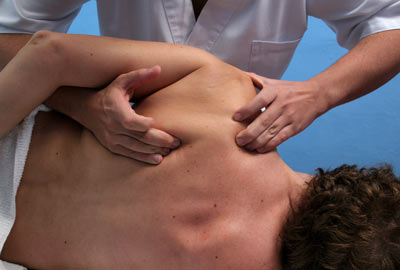
Massage for athletes has a host of benefits, from encouraging relaxation and reducing stress to minimizing pain and reducing recovery time from illness and injury. Benefits of massage are taken very seriously in the world of athletes, where massage is being seen as a way of improving performance as well as shortening recovery time from injury and reducing pain. The potential benefits for athletes are based on the many ways that massage affects both the body and the mind.
The physiological effects of massage for athletes
Massage has been shown to have positive effects on the cardiovascular system by dilating blood vessels and promoting better circulation and, in turn, increasing the delivery of fresh oxygen and nutrients to the tissues and improving the rate of removal of toxins and waste products. This is in addition to the calming effect of massage that lowers the heart rate and encourages rest and recuperation. The improved blood flow also allows athletes to recover from exertion quicker as it encourages the muscles to relax, leading to less muscle tension and soreness.
Less well known is the link between massage and the growth of new mitochondria. These are energy-producing cells that convert oxygen into energy. With the ability to improve recovery times and increase growth of energy producing mitochondria, massage for athletes can result in significant boosts in performance.
The psychological effects of massage for athletes
Athletes need focus, concentration, and a will to win. These mental strengths are just as important, if not more so than physical strength and ability. Massage encourages relaxation and reduces stress, tension, and anxiety by activating the individuals parasympathetic nervous system. This increases levels of dopamine and serotonin in the blood. At the same time massage reduces excess levels of cortisol, a powerful stress hormone, which reduces recovery times both physically and psychologically.
Best types of massage for athletes
Just as no two athletes are the same, neither are any two types of massage therapy. The type of massage that is the most beneficial to an athlete depends on a number of factors. A gentle spa type massage may be good to relax, but deep tissue massage is more effective for dealing with a specific problems or injury. Amongst the most common types of beneficial massage for athletes are:
 Sports massage – a fast paced massage that often involves stretching as well as muscle and tissue manipulation.
Sports massage – a fast paced massage that often involves stretching as well as muscle and tissue manipulation.
Deep tissue massage – this type of massage applies heavier pressure to muscles and tissues than many other forms. It can be uncomfortable as it is designed to release tension in the muscles.
Myofascial release – a specific type of therapy where pressure is applied to release tension in the connective tissue that covers the muscles. This may be of benefit following an injury or to improve movement.
When massage for athletes is most beneficial
There is most likely no one right answer to this question. However, as a general rule, prevention of injury is crucial, and athletes who have a regular massage program are less likely to succumb to injury which results in longer periods of uninterrupted optimal training which leads to better overall performance. A rule of thumb is to include a massage into your training program at least once every week if you’re training more than three times a week.
It’s important to remember that while you will feel the benefits after massage therapy, you may also feel as if you’ve undergone a workout. The optimal time to have a restorative massage is on or before a rest day. Massage for athletes has been around since the days of the Romans. If you’re an athlete and are looking for a performance edge, you can find a massage therapist who has experience working with athletes at MassageBook.com
Massage can help athletes with common injuries
Common injuries where massage can help reduce recovery times and get athletes back on their feet and doing what they love most: competing.
Hamstring strains
Lower back pain
Planta Fasciitis
Tennis elbow (tendonitis)
Illio Tibial Band Syndrome (ITB)
Carpal tunnel syndrome
Neck injuries
Shoulder injuries
Updated September 4, 2015




